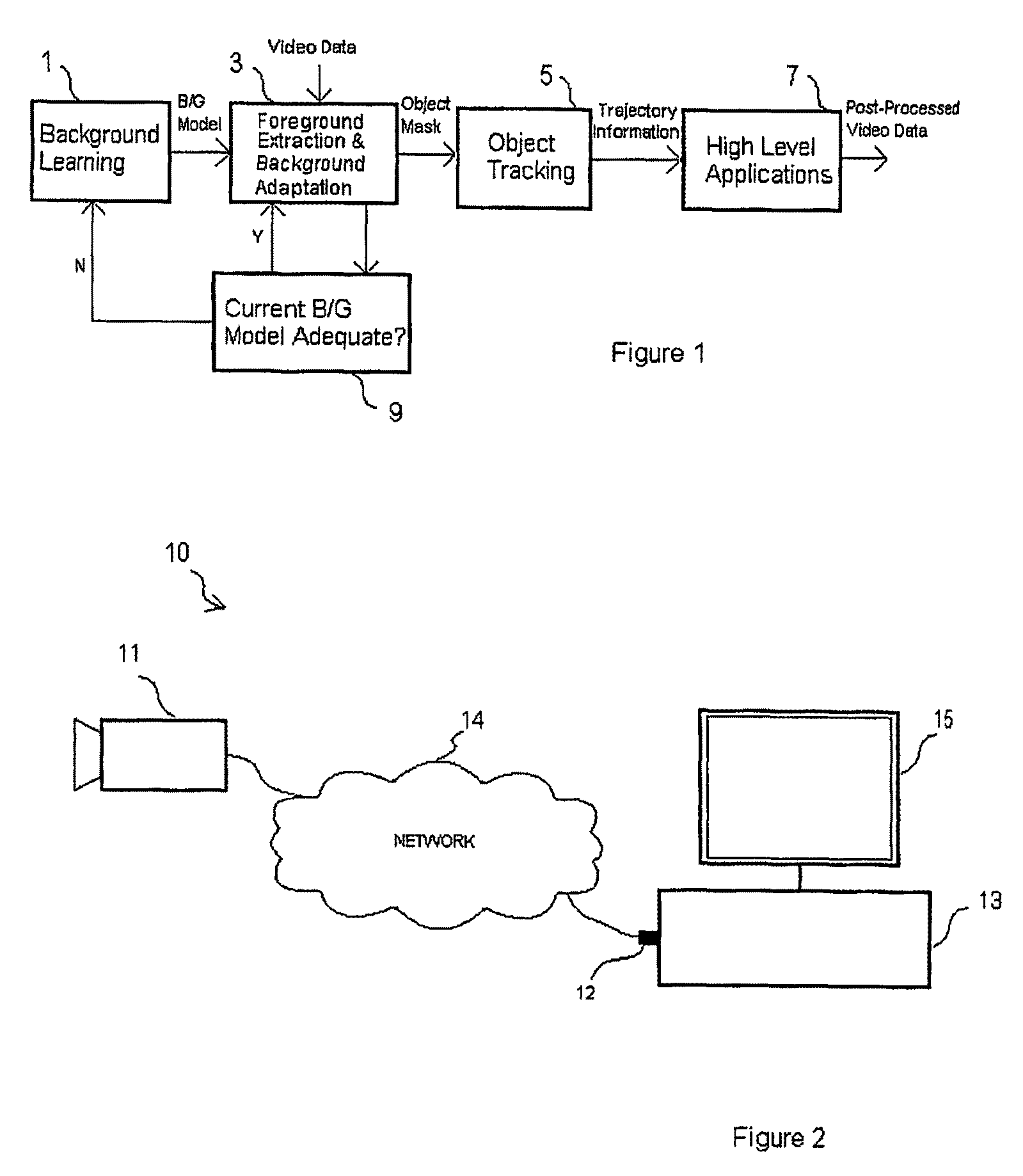Classifying an object in a video frame
a technology of object and video frame, applied in the field of classifying objects in video frames, can solve the problems of inaccurate tracking history, lost tracking, and objects appearing and disappearing at any pla
- Summary
- Abstract
- Description
- Claims
- Application Information
AI Technical Summary
Benefits of technology
Problems solved by technology
Method used
Image
Examples
Embodiment Construction
[0051]Referring to FIG. 2, an intelligent video surveillance system 10 comprises a camera 11, a personal computer (PC) 13, and a video monitor 15. The camera 11 is a web camera, for example a Logitec™ Pro 4000 colour webcam. Any type of camera capable of outputting digital image data can be used, for example a digital camcorder or an analogue camera with analogue-to-digital conversion means. The web camera 11 communicates with the PC 13 over a network 14, which can be any network such as a Local Area Network (LAN) or the Internet. In practice, the web camera 11 and PC 13 are connected to the network 14 via respective network connections (not shown) such as Digital Subscriber Line (DSL) modems. Alternatively, the web camera 11 can be connected directly to the PC 13 by means of the PC's universal serial bus (USB) port 12. The PC 13 may comprise any standard computer. In this case, the PC 13 is a desktop computer having a 1 GHz processor, 512 Megabytes random access memory (RAM), and a...
PUM
 Login to View More
Login to View More Abstract
Description
Claims
Application Information
 Login to View More
Login to View More - R&D
- Intellectual Property
- Life Sciences
- Materials
- Tech Scout
- Unparalleled Data Quality
- Higher Quality Content
- 60% Fewer Hallucinations
Browse by: Latest US Patents, China's latest patents, Technical Efficacy Thesaurus, Application Domain, Technology Topic, Popular Technical Reports.
© 2025 PatSnap. All rights reserved.Legal|Privacy policy|Modern Slavery Act Transparency Statement|Sitemap|About US| Contact US: help@patsnap.com



